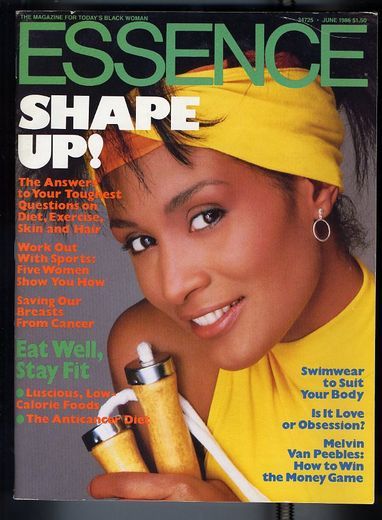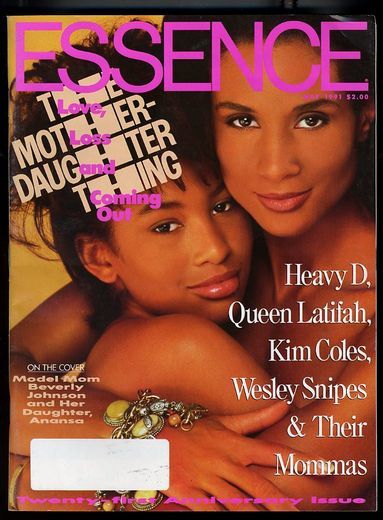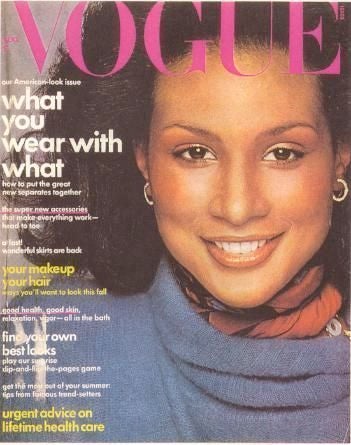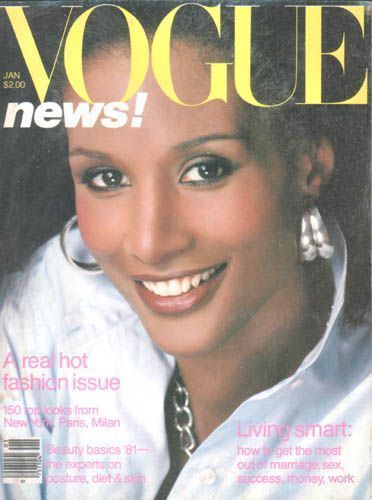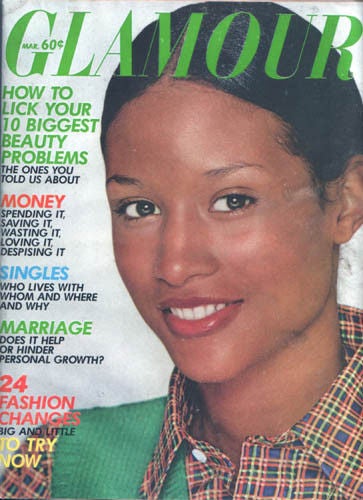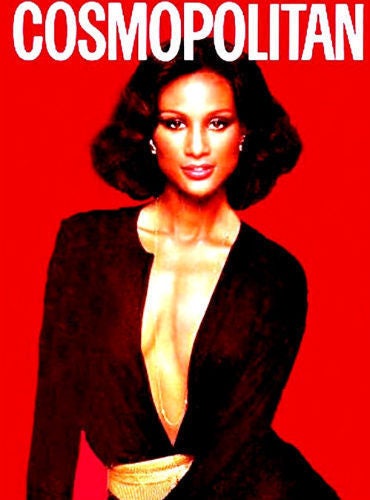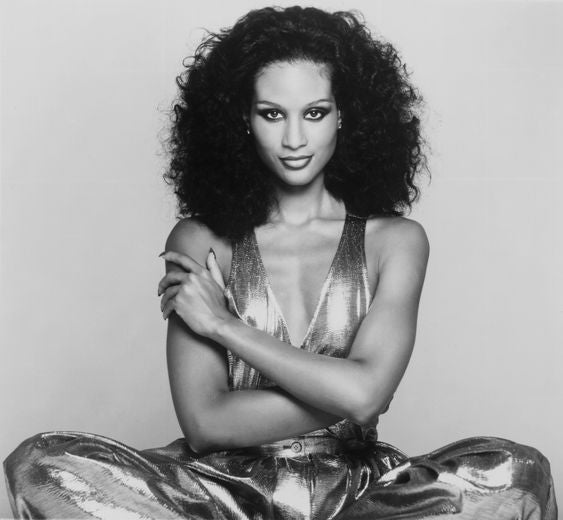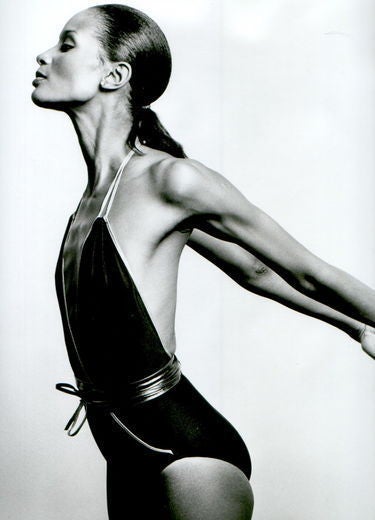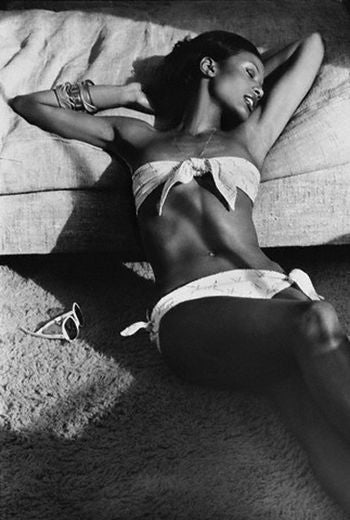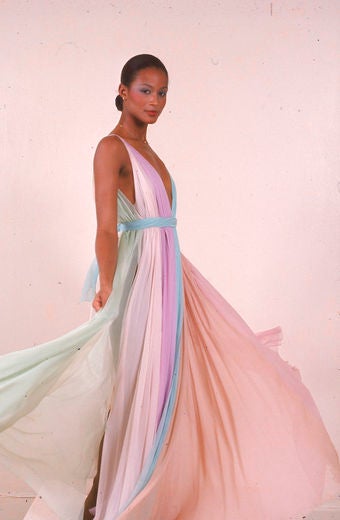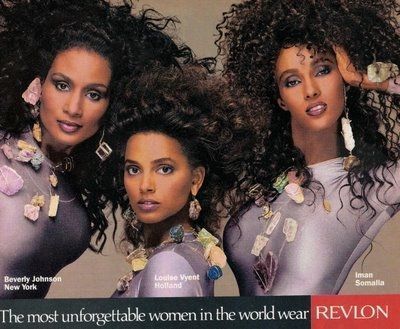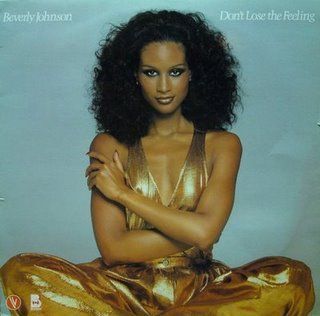Vogue, August 1974. “So that’s the cover, it’s still one of my favorites. I’ve never been so thrilled about anything before in my life. You know it’s every model’s dream to be doing the cover of Vogue, and then when I realized the impact it was going to have on us women of color, finally being accepted in mainstream America as beautiful, it meant a lot then. And I really try to hold up and be responsible for that gift.”
“This was the second or third American Vogue cover. It was very interesting — [photographer Richard] Avedon did not want to shoot me for the cover of Vogue and Francesco Scavullo did. And when this cover was so successful all of a sudden Dick Avedon wanted to do the cover.”
“It’s just really interesting how different photographers see you; sometimes they really can’t see you. I think that because of the color of my skin they couldn’t really see me, see my beauty, see what other people saw. But he finally came around.”
“Glamour magazine, that’s where it all started,” Johnson remembers. “I did a lot of covers for Glamour, and they used to do these questionnaires that they would sent out to their readers where they’d ask, ‘Would you like to live next door to her?’ or ‘Would you like to be her best friend?’ or ‘Would you like to be her?’ And these White Southerners wrote back, ‘We would like to be Beverly Johnson.’ The editor-in-chief couldn’t explain it because when they would try to put a woman of color or [another] Black model on the cover, they would get all this hate mail. I like to think that my light shines through.”
“This was a really important cover because I was trying to change my image. They used to always pull my hair back. They didn’t know I could do sexy, and I wanted to do sensual, and I think that the cover was beautiful. Once again, that cover was Francesco Scavullo.”
“This picture was on my album cover, and once again this was Francesco Scavullo. This was three months after I had Anansa. Yusuke Suga did the hair and a makeup artist named Wade Bandy did my makeup, and they were the best in the world. That’s one of my favorite pictures.”
“I always wanted to be in a bathing suit and I really wasn’t a bathing-suit kind of model — I was more of a high-fashion model. But now I realize why I was a high-fashion model and not in a bathing suit, because I was so thin and so flat-chested. But you couldn’t tell me nothing. At the time when I saw the photo I didn’t like it, but now I see the beauty in it.”
“This was right after I cut my hair and I was going through a lot of things at that time, because you make those big changes when you’re in an introspective [mood]. I kept asking the editor to be in a bathing suit, and it really was a shift for me in the way I worked as a fashion model.”
“This is a particularly important photograph because this is Halston and I did my first runway show with Halston, and that’s when you didn’t encroach on that territory. The runway girls were like, ’You’ve got all the covers, all of the editorials — now you’re coming over here?’” says Johnson. “But I wanted to know all about the business, I wanted to meet the designers and learn how they think. Halston made that dress for me, he took the fabric and everything and made it for me.”
“This is one of my favorite photographs. I thought it was one of the most beautiful pictures of myself. It wasn’t because that’s how I saw myself in the mirror, but because that’s how I wanted to see myself in the mirror. I absolutely love this photograph and I love the fact that Iman and Louise Vyent were all a part of this unforgettable women’s campaign.”

